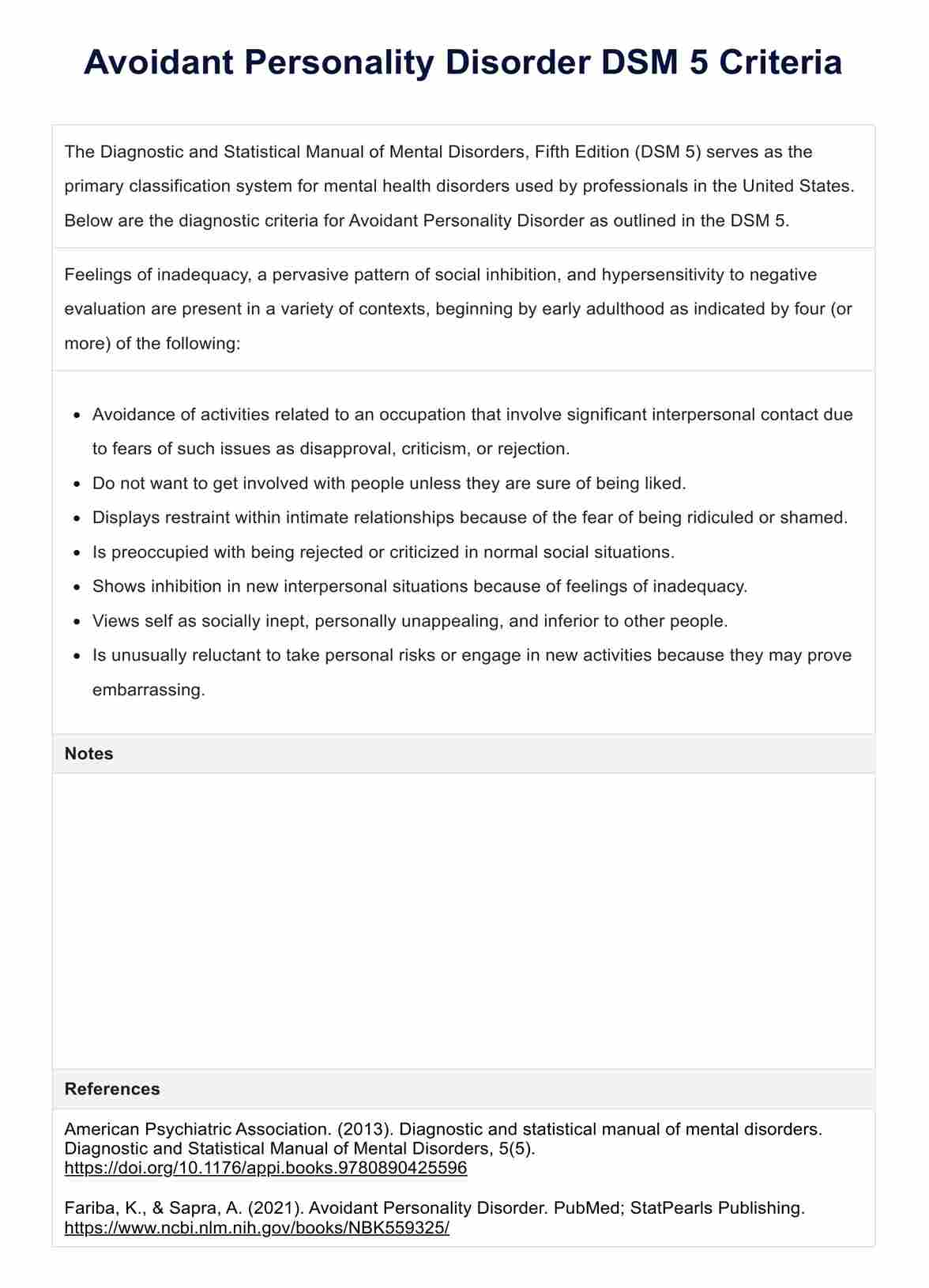No, they are different personality disorders. Avoidant Personality Disorder involves an extreme fear of rejection and criticism, while Schizoid Personality Disorder is characterized by detachment from social relationships and a limited range of emotional expression.

Avoidant Personality Disorder DSM 5 Criteria
Learn about Avoidant Personality Disorder DSM 5 Criteria, aiding diagnosis. Download the template for comprehensive insights into symptoms and diagnostic guidelines.
Use Template
Avoidant Personality Disorder DSM 5 Criteria Template
Commonly asked questions
Yes, with therapy and practice, individuals can learn and develop social skills to better manage their fears and interact more comfortably in social situations.
Family members can offer empathy, understanding, and encouragement while respecting their loved one's need for space and autonomy, creating a supportive environment for their emotional growth and recovery.
EHR and practice management software
Get started for free
*No credit card required
Free
$0/usd
Unlimited clients
Telehealth
1GB of storage
Client portal text
Automated billing and online payments











